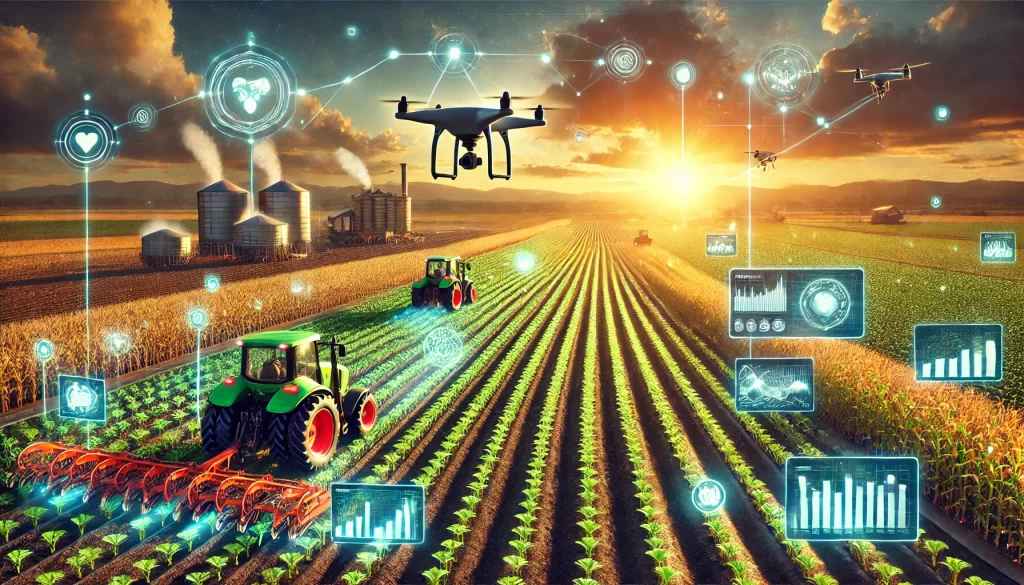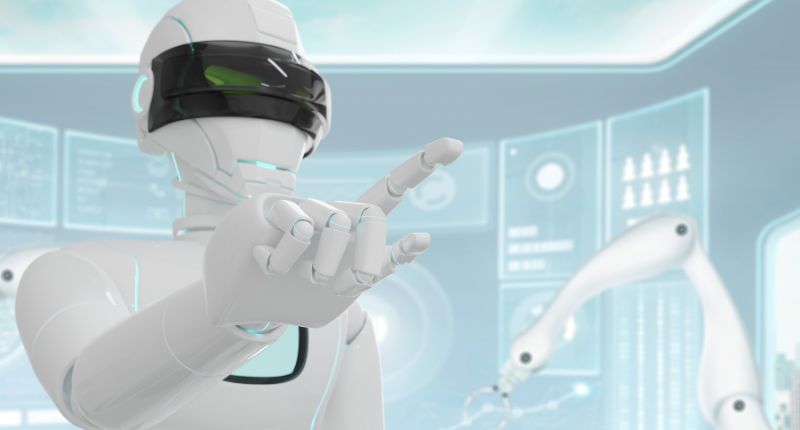AI in Agriculture: How Technology is Feeding the World
Agriculture has been the backbone of human civilization for centuries. As the global population rises, so does the demand for food production. Traditional farming methods alone are no longer sufficient to meet this growing demand. Enter AI in agriculture—a technological revolution that is reshaping how we grow, manage, and distribute food.
From precision farming to automated irrigation, AI is optimizing agricultural processes, increasing efficiency, and reducing waste. This article explores the profound impact of AI on agriculture and how it is ensuring food security worldwide.
The Role of AI in Modern Agriculture
AI is playing a critical role in transforming agriculture by addressing key challenges such as climate change, labor shortages, and food demand. The integration of machine learning, robotics, and data analytics has enabled smarter, more sustainable farming.
1. Precision Farming
Precision farming leverages AI to analyze soil, weather, and crop conditions to optimize yield.
- AI-powered sensors monitor soil health and provide real-time data.
- Machine learning models predict the best planting and harvesting times.
- Drones and satellites help farmers assess crop health remotely.
🔗 Learn more about precision farming
2. AI-Powered Irrigation Systems
Water is a critical resource in agriculture. AI-based irrigation systems optimize water usage by:
- Detecting moisture levels in the soil.
- Adjusting water distribution based on weather forecasts.
- Preventing over-irrigation and reducing water waste.
3. Pest and Disease Detection
AI-powered computer vision technology helps farmers detect plant diseases and pest infestations early, reducing crop losses.
- Image recognition software identifies diseases from plant leaf patterns.
- AI-driven pest monitoring systems predict outbreaks and suggest timely interventions.
4. Autonomous Farming Equipment
Robots and autonomous vehicles are transforming traditional farming methods. AI-driven machinery:
- Performs automated planting and harvesting with high precision.
- Reduces reliance on manual labor.
- Enhances efficiency with self-driving tractors and robotic weed control.
5. Smart Supply Chain Management
AI streamlines the food supply chain by optimizing logistics, reducing waste, and ensuring food reaches markets efficiently.
- Predictive analytics forecast demand and manage inventory.
- AI-driven sorting systems categorize fruits and vegetables based on quality and ripeness.
- Blockchain integration ensures traceability in food production.
Benefits of AI in Agriculture
1. Increased Crop Yields
By analyzing data from weather, soil, and plants, AI enables farmers to maximize crop production.
2. Cost Savings
AI-powered automation reduces labor costs and optimizes resource allocation.
3. Sustainable Farming Practices
AI minimizes the use of fertilizers, pesticides, and water, making farming more eco-friendly.
4. Improved Decision-Making
AI provides real-time insights, helping farmers make informed decisions on planting, irrigation, and harvesting.
5. Enhanced Food Security
By increasing efficiency and reducing food waste, AI ensures a stable food supply for growing populations.
Challenges of Implementing AI in Agriculture
Despite its benefits, AI adoption in agriculture comes with challenges:
1. High Initial Investment
AI-powered farming equipment and software require significant upfront costs, which may be a barrier for small-scale farmers.
2. Data Privacy Concerns
Farmers must trust AI systems with sensitive agricultural data, raising privacy and security concerns.
3. Limited Technical Expertise
Many farmers may lack the knowledge to operate AI-driven machinery, necessitating proper training.
4. Connectivity Issues in Rural Areas
AI relies on data, and poor internet connectivity in remote farming regions can limit its effectiveness.
The Future of AI in Agriculture
AI technology continues to evolve, promising even more advanced solutions for farming:
1. AI-Driven Vertical Farming
- AI will optimize indoor farming and hydroponics to produce food in urban areas.
2. Predictive Climate Analytics
- AI will provide climate-resilient farming solutions to help farmers adapt to changing weather patterns.
3. AI-Powered Livestock Monitoring
- Smart sensors will track animal health and productivity to improve livestock management.
4. AI-Enhanced Crop Genetics
- Machine learning will aid in genetically optimizing crops for higher yields and resistance to diseases.
Conclusion
AI is revolutionizing agriculture by making farming more efficient, sustainable, and productive. From precision farming to smart irrigation, AI-driven innovations are ensuring that we can feed the world’s growing population while preserving natural resources.
As technology advances, the integration of AI in agriculture will continue to enhance food security, reduce waste, and promote sustainable farming practices. Farmers, policymakers, and tech developers must collaborate to ensure AI benefits all levels of agriculture, from small-scale farms to large agribusinesses.
By embracing AI, we are not just growing food—we are growing the future.


